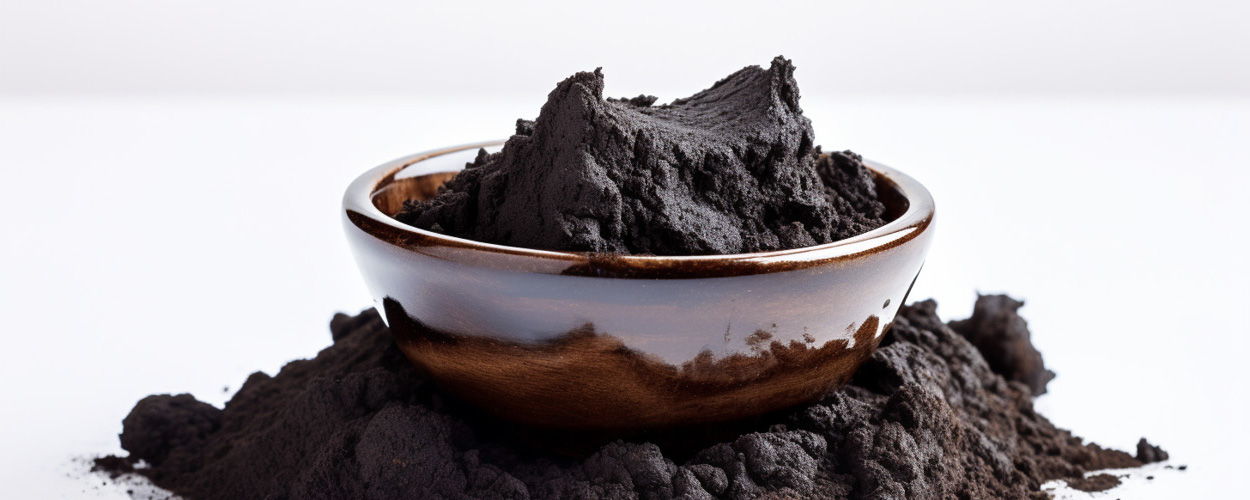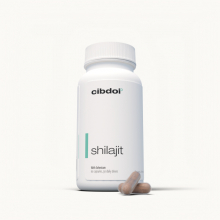What does shilajit do to the body?
Last updated:
Published:
What Does Shilajit Do to the Body? The Powerful Effects Explained
Shilajit is an ancient medicinal substance that has been used in traditional healing systems for centuries. But what does modern science tell us about what shilajit actually does to the human body?
Contents:
- An Energizing Adaptogen
- Packed with Minerals and Fulvic Acid
- Supports Energy Production & Mitochondria
- Boosts ATP Status
- Optimizes Hormones Men & Women
- May Help With Altitude Adjustment
- Safety Profile & Side Effects
- Should You Try Shilajit Supplementation?
- What Are the Origins of Shilajit?
- How Do You Take Shilajit?
- When Should You Take Shilajit?
- Can You Take Shilajit Every Day?
- Will Shilajit Interact With Medications?
- Can Children or Teens Take Shilajit?
- Summary
In this article, we’ll explore the main effects of shilajit and back each one up with scientific research. By the end, you’ll have a clear understanding of if and how shilajit can benefit your own vitality and wellbeing.
An Energizing Adaptogen
Shilajit is classified as an adaptogenic herb. What does this mean? Adaptogens like shilajit help your body adapt to various stressors and find balance.
In the fast-paced modern world, we deal with physical stressors like poor diet, lack of exercise, toxin exposure, etc. We also face plenty of mental and emotional stressors.
Over time, these stressors drain us. We feel fatigued, anxious, and struggle to concentrate.
Shilajit to the rescue - it counteracts that chronic stress and revitalizes your body at the cellular level. Those who supplement with shilajit report feeling:
- More physical and mental energy
- Improved mood and sense of wellbeing
- Better ability to handle life’s demands
These energizing, balancing benefits make sense when you consider shilajit’s nutrient density...
Packed with Minerals and Fulvic Acid
The main active components in shilajit that produce effects in the body are:
- Fulvic acid - This is a type of compound formed when plant matter breaks down over millions of years. It has incredible mineral transporting abilities.
- Dibenzo-α-pyrones – These protective antioxidants scavenge free radicals and combat inflammation.
- Over 80 minerals in ionic form, including many that support energy metabolism like iron, copper, and cobalt.
There are also various other plant metabolites, amino acids, and vitamins present.
But the true power comes from how the combination of these natural compounds interacts with our physiology...
Supports Energy Production & Mitochondria
The dense package of co-factors in shilajit is involved in critical bioenergetic processes.
Specifically, shilajit enhances mitochondria function. Mitochondria are the “power plants” within our cells that produce ATP energy.
By enhancing mitochondrial activity, shilajit increases cellular respiration and gives an energizing effect.
Boosts ATP Status
Direct measurements confirm that shilajit elevates ATP levels in the body. ATP (adenosine triphosphate) is the main currency of cellular energy that drives physiological processes.
Higher ATP translates to better performance – whether that’s physical, cognitive, reproductive or other vital processes. Shilajit delivers raw energy materials so your body has more “fuel in the tank.”
Optimizes Hormones Men & Women
The dense nutrition in shilajit regulates various hormones, which has cascading benefits:
- Testosterone – Multiple human and animal studies show increases in total and free testosterone levels. In infertile men, the improvements are particularly pronounced.
- Thyroid Hormones T3 & T4 – These metabolic regulators often become impaired by stress and poor nutrition. Shilajit appears protective and stimulating for thyroid function.
- Fertility – Shilajit enhances follicle stimulating hormone (FSH) and luteinizing hormone (LH) in both men and women. Together with testosterone, these improvements revitalize the reproductive system.
- Growth Hormone – Some preliminary evidence suggests shilajit triggers more growth hormone release, assisting tissue healing and recovery.
While research continues, it is clear that shilajit re-establishes optimal hormone balance where needed.
May Help With Altitude Adjustment
Interestingly, shilajit has been used traditionally by mountain cultures like the Himalayans to acclimate better to high altitude. Science may have now found out why...
Some researchers discovered it stabilizes hypoxia inducible genes in animals. These special genes get activated to help the body adapt to low-oxygen environments.
By assisting this gene response, shilajit enables cells to cope better in thin mountain air. More studies are still needed to verify this unique benefit.
Safety Profile & Side Effects
Overall, shilajit has an excellent safety profile according to research thus far. Side effects are rare at commonly recommended doses. Reported adverse reactions include:
- Mild gastric distress when taken without food
- Potential allergic rash
- Changes in heart rate/blood pressure (usually transient)
However, shilajit’s long record of traditional use suggests these side effects are uncommon. Just be mindful of your own reactions.
Now that you know the science...
Should You Try Shilajit Supplementation?
Traditional Ayurvedic wisdom tells us shilajit can rejuvenate the body and slow aging. Modern research is now confirming these powerful health effects.
If you are struggling with fatigue, weakness, and chronic stress - shilajit supplementation may revitalize your body and mind at the deepest cellular levels.
It still amazes me how this ancient medicinal tar nourishes our energy metabolism in so many ways. The mineral transporting fulvic acid works in harmony with key hormones and gene expression that tune up vitality.
So while more research is still pending, shilajit delivers tangible results you can feel...
Give it try for yourself - you might just be amazed at what a black goo from high mountain rocks can do for human physiology!
Frequently Asked Questions on Shilajit
Below find answers to the most common questions on shilajit and its effects on the human body.
What Are the Origins of Shilajit?
Shilajit is a tar-like substance that oozes from between rocks in mountain ranges across Asia, especially the Himalayas. It is formed by the centuries-long breakdown of plants mixed with microbial metabolites. Humans have used shilajit for millennia as a rejuvenator in traditional medicine systems like Ayurveda.
How Do You Take Shilajit?
The most common way to take shilajit is as a supplement, either in capsule or powder form. The recommended dose can depend on the delivery method and your own needs. Follow package directions or consult an integrative health practitioner.
Shilajit has a potent taste, so drinking it as a tea or tincture is less pleasant for most. However, consuming it dissolved in milk is traditional.
When Should You Take Shilajit?
It is often recommended to take shilajit first thing in the morning on an empty stomach. This timing allows optimal absorption by the gut. Waiting at least 30 minutes before meals also helps it work most efficiently.
If shilajit gives you excess energy that keeps you up at night, try taking it earlier in the day. As always, your ideal regimen depends on your body and lifestyle.
Can You Take Shilajit Every Day?
There are no strict requirements that shilajit must be cycled to avoid side effects. Evidence suggests it is safe and beneficial for long-term daily use, as it has been in various traditional healing systems.
Listen to your body’s own signals about appropriate breaks from any supplement. But shilajit can be taken every day without causing dependence or tolerance issues.
Will Shilajit Interact With Medications?
So far, no negative interactions between shilajit and pharmaceutical drugs have been reported. However, cordyceps, another medicinal fungus, has potential interactions. Until more research is done, air on the side of caution.
Talk to your doctor about whether shilajit is right for you if you currently take prescription medications, especially psych meds, diabetes drugs, or immunosuppressants. Stop taking shilajit if any problems develop.
Can Children or Teens Take Shilajit?
No studies have examined shilajit’s safety for children or teenagers under age 18 specifically. All current evidence involves only adults over 18.
Therefore, shilajit cannot be currently recommended as safe or beneficial for those under 18 years old. Stick to adult dosing guidelines to be cautious until pediatric specialty research is done on shilajit.
As always, check with a doctor before giving any new herbal supplement to kids or adolescents before sufficient safety data is available in that population.
Summary
Shilajit is an ancient medicinal tar that has been used for centuries in traditional healing systems like Ayurveda and Traditional Chinese Medicine. Modern science is now validating many of shilajit's traditional uses, especially relating to enhanced energy, stamina, and vitality. Shilajit contains three main active components - fulvic acid, antioxidants called dibenzo-α-pyrones, and over 80 different minerals. These compounds work together to optimize cellular energy production through enhancing mitochondrial function and increasing ATP levels. By improving energy metabolism at a foundational level, shilajit supplementation can relieve fatigue, boost immunity, enhance cognition, and support overall wellness. Clinical studies also show shilajit can regulate key hormones like testosterone, thyroid, and fertility hormones. Preliminary research suggests it may even help acclimatize better to high altitude environments. While more research is still needed, shilajit has a solid safety profile with minimal side effects in recommended doses. If you struggle with low energy, vitality, and chronic fatigue or stress - shilajit may help rejuvenate cellular functioning.
















